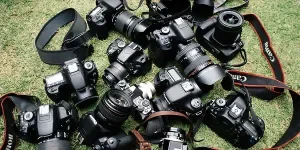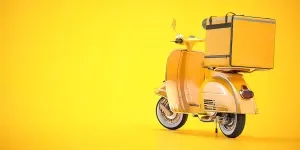Table of Contents
● Introduction
● Market overview
● Different types and their features
● Things to consider when selecting products
● Conclusion
Introduction
LED light bars have revolutionized vehicle lighting with their unparalleled energy efficiency, impressive longevity, and remarkable versatility. These advanced lighting solutions have become indispensable for a wide range of applications, from enhancing visibility during off-road adventures to providing critical illumination for emergency services. The superior illumination provided by LED light bars significantly enhances safety and visibility, allowing drivers to navigate the darkest and most challenging conditions with confidence. Furthermore, their adaptability allows them to be customized to meet specific needs, whether for professional use in public safety, construction, or recreational activities. As technology continues to advance, LED light bars are incorporating more features such as smart controls, improved heat dissipation, and sustainable materials, ensuring they remain a crucial component in modern vehicle lighting solutions. Their ability to provide reliable, powerful lighting while consuming less energy makes them a preferred choice for those seeking both performance and efficiency. Whether used in harsh environments or for everyday driving, LED light bars offer unparalleled benefits that make them an essential addition to any vehicle. The ongoing innovations in LED technology continue to push the boundaries of what these light bars can achieve, solidifying their place as a critical tool for enhanced vehicle lighting.

Market overview
The global LED light bar market is experiencing significant growth, valued at $2,222.04 million in 2023 and projected to reach $1,012.10 million by 2030, with a compound annual growth rate (CAGR) of 11.4%, according to Verified Market Reports. This impressive growth is driven by the increasing demand for energy-efficient lighting solutions across various sectors, including automotive, emergency services, maritime, agriculture, and architectural lighting. The market’s expansion is supported by the superior performance of LED light bars, which offer greater longevity and lower energy consumption compared to traditional lighting sources. Key players in the market, such as Osram, GE Lighting, Philips, and Cree, are leading the charge in innovation and product development. These companies are focusing on the development of smart lighting solutions that offer greater customization and control, meeting the specific needs of different applications.
Market trends indicate a significant shift towards specialization and customization of LED light bars. According to Grand View Research, there is a rising demand for specialized light bars designed for specific applications, such as agricultural use with insect-repelling wavelengths and maritime conditions with salt-water-resistant variants. The market for specialty light bars is expected to grow at a CAGR of 14.6%. Customization options, including modular designs that allow users to adjust mounting options, color temperatures, and beam patterns, are becoming more popular. The market for smart LED light bars is also expanding rapidly, with a projected growth rate of 25.2% CAGR, as reported by ResearchAndMarkets.com. There is also a growing emphasis on sustainability, with manufacturers increasingly using eco-friendly materials and production processes to reduce their environmental impact, as noted by Fact.MR. This trend towards tailored solutions is enabling consumers to optimize their lighting systems for particular requirements, driving further growth and diversification in the LED light bar market.

Different types and their features
Full-size LED light bars are a top choice for vehicles requiring extensive illumination, such as police cars, fire trucks, and tow trucks. One notable example is the Feniex Fusion GPL Lightbar, which offers customizable sizes and single or dual color options. These light bars come with various light spread optics, allowing users to choose between a focused 40-degree beam or a wide 180-degree spread. Additional modules, including work lights and alley lights, enhance their functionality, making them versatile for various emergency and utility applications, according to Ultra Bright Lightz.
Mini LED light bars are compact options ideal for smaller vehicles like ATVs and motorcycles. Despite their size, these light bars pack a punch with high-powered LEDs and configurable optics. They also offer multiple flash patterns, making them suitable for a range of uses from recreational activities to smaller emergency response vehicles. Their small size allows for easy installation in tight spaces without compromising on light output, as noted by Ultra Bright Lightz.
LED interior visor bars are designed for undercover and compact emergency vehicles, providing powerful lighting in a smaller footprint. These bars are easy to install without requiring modifications to the vehicle’s roof, making them a practical option for vehicles where exterior light bars are impractical. Interior visor bars like the UBL U-Lite and Feniex Fusion models offer high-impact lighting and can be equipped with various flash patterns and color combinations, making them effective for discrete yet powerful illumination needs.
Other key features of LED light bars include their brightness, beam patterns, and resistance to water and dust. Brightness is measured in lumens, with higher lumens indicating a brighter light output. Beam patterns vary, with spot beams providing focused light for long-distance visibility and flood beams offering wider coverage for broader illumination. According to Nilight, LED light bars come with different IP ratings, ranging from IP64 to IP69K, indicating their durability under various environmental conditions. Higher IP ratings signify better protection against water and dust, ensuring that the light bars can withstand harsh conditions and continue to perform reliably.
By incorporating these features, LED light bars offer versatile and powerful lighting solutions tailored to meet the diverse needs of different vehicles and applications.

Things to consider when selecting products
When selecting LED light bars, one of the primary considerations is the shape and size of the light bar. Straight light bars are the most common and provide a focused beam pattern suitable for general use. Curved light bars, on the other hand, offer a wider beam pattern that illuminates a broader area, making them ideal for off-road driving and situations requiring extensive peripheral lighting. According to Nilight, sizes range from mini light bars, which are perfect for smaller vehicles like ATVs and motorcycles, to full-size light bars designed for larger trucks and emergency vehicles. The choice of shape and size should align with the vehicle type and the specific application needs.
The color of the LED lights is another crucial factor to consider. LED light bars come in various color options, including white, amber, and blue. Each color serves different visibility needs and applications. White light is commonly used for general illumination due to its brightness and clarity. Amber light reduces glare in foggy or dusty conditions, making it suitable for off-road and utility vehicles. Blue light is often used in emergency services for its high visibility and ability to signal urgency. Selecting the appropriate color based on the intended use can significantly enhance the effectiveness of the light bar.

Power requirements are essential to ensure the vehicle’s battery can support the light bar’s wattage without causing power drain. According to Carorbis, matching the light bar’s power consumption with the vehicle’s electrical system capacity is crucial. High-wattage light bars offer greater brightness but may require a robust battery and alternator to maintain optimal performance. Proper installation and maintenance are also key to the longevity and functionality of the light bar. Accurate measurement and marking of mounting points help prevent damage during installation. Secure wiring and grounding are necessary to avoid electrical issues, and regular cleaning with a soft brush and microfiber cloth maintains the light bar’s brightness and clarity.
Durability is a significant consideration, especially for light bars used in harsh environments. Choosing light bars with high IP ratings ensures better resistance to water and dust. For instance, light bars with an IP67 rating can withstand immersion in water up to one meter for 30 minutes, making them suitable for vehicles exposed to wet and dusty conditions. According to Ultra Bright Lightz, higher IP ratings, such as IP69K, offer protection against high-pressure water jets and extreme dust ingress, providing superior durability and reliability. Opting for durable light bars with high IP ratings guarantees long-lasting performance even in the most challenging conditions.

Conclusion
LED light bars are a crucial upgrade for enhancing vehicle visibility and safety, making them indispensable for a variety of applications. As technology advances, these lighting solutions offer greater energy efficiency, durability, and versatility. When selecting the right LED light bar, it’s essential to consider factors such as type, features, and durability to ensure it meets specific needs and applications. Full-size light bars are ideal for larger vehicles like tow trucks and emergency vehicles, offering customizable options and powerful illumination. Mini light bars and interior visor bars provide compact yet effective lighting solutions for smaller vehicles and undercover operations. Additionally, considering the color of the LEDs, power requirements, and IP ratings for water and dust resistance will help ensure optimal performance and longevity. The market’s trend towards smart lighting and sustainable manufacturing further enhances the appeal and functionality of LED light bars. By carefully evaluating these elements, users can choose a light bar that delivers superior performance and reliability, whether for off-road adventures, emergency services, or daily driving.





 Afrikaans
Afrikaans አማርኛ
አማርኛ العربية
العربية বাংলা
বাংলা Nederlands
Nederlands English
English Français
Français Deutsch
Deutsch हिन्दी
हिन्दी Bahasa Indonesia
Bahasa Indonesia Italiano
Italiano 日本語
日本語 한국어
한국어 Bahasa Melayu
Bahasa Melayu മലയാളം
മലയാളം پښتو
پښتو فارسی
فارسی Polski
Polski Português
Português Русский
Русский Español
Español Kiswahili
Kiswahili ไทย
ไทย Türkçe
Türkçe اردو
اردو Tiếng Việt
Tiếng Việt isiXhosa
isiXhosa Zulu
Zulu